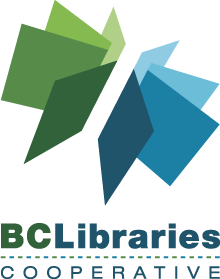What is Accessible Web Content?
Web content refers to information such as text, images, and sounds. It also includes the code or markup language that defines the structure, presentation, etc. of such content (HTML, or HyperText Markup Language).
Accessible web content means that the information has been created with accessibility principles in mind, making sure that the text has been written with plain and respectful language principles, and that it can be accessed with different assistive technologies using markup language. It also refers to technologies that utilize web content to convey information, such as tablets that operate as ereaders–meaning that the tools themselves must also be designed with accessibility in mind.
The markup language adheres to the WCAG guidelines. The Web Content Accessibility Guidelines (WCAG) was developed by the World Wide Web Consortium W3C process, in cooperation with individuals and organizations around the world, to provide a single shared standard for web content accessibility that meets the needs of individuals, organizations, and governments internationally. Even though WCAG is a voluntary guideline, it has been embedded into many legislations making it a required standard.
Print and other disabilities
Accessibility is defined broadly to include many different barriers. Some examples of disabilities include:
Visual impairments
- Low vision, colour-blindness, or blindness
- Consider situational challenges such as using a small screen
Auditory impairments
- Closed-captioning must be offered with every video.
Physical or mobility impairment
- Mobility difficulties caused by Amyotrophic Lateral Sclerosis (ALS) or spinal cord injury
- Dexterity problems such as Arthritis, Cerebral Palsy, Paralysis, Parkinson’s Disease, Multiple Sclerosis, or Muscular Dystrophy
- Upper limb difference, or, temporary disabilities such as a broken arm
Cognitive or comprehension impairment
- Brain injury including Stroke, Dementia, or Alzheimer’s
- Learning disabilities such as ADHD or Dyslexia
- Neurodivergency
Assistive Technologies
Consider some examples of assistive technologies used to navigate the content on your website:
- As simple as colour modification (and using a preferences tool)
- Includes keyboards, and mice or mouse trackers
- Screen readers
- Voice controlled switches & puff tools, where mobility is severely impaired
- Alternative text sources or “alt text” – a text-based interface that also allows for low band-width usage.
Simon Jaeger from National Network for Equitable Library Service (NNELS) demonstrates screen readers (note in particular 1:25-8:55):
WCAG and the Four Principles of Accessibility
Web Content Accessibility Guidelines (WCAG) Quick Reference
WCAG has three tiers of compliance:
- A (basic and generally not good enough to meet legislated standards)
- AA (generally what is legislated)
- AAA (ideal or aspirational, but difficult to meet)
WCAG also has defined the following principles, or ideal states, of accessibility:
Perceivable
Create information in ways that all audiences can perceive it. Consider all accessibility concerns, disabilities and the tools that are used to access content. The standards in this section include guidelines such as:
- Provide captions for prerecorded and live audio content (videos, podcasts, etc.) (WCAG 1.2.2 and 1.2.4)
- Don’t use colour alone to convey meaning (WCAG 1.4.1)
- Images of text are only used when absolutely necessary (or for decoration only) (WCAG 1.4.9)
Operable
Where the Perceivable principle is concerned with how users consume information, operability refers to the interface and navigation of digital content. This section includes the following guidelines to ensure that websites (and devices) are operable for all:
- Users should be able to navigate to all content using only their keyboard (WCAG 2.1.1)
- Do not include time limits on/in your digital technologies (WCAG 2.2.3)
- Your website does not have anything that flashes more than three times quickly (WCAG 2.3.2)
- Each of your web pages has unique and descriptive titles (WCAG 2.4.2)
Understandable
The next iteration of WCAG is expected to increase focus around comprehension or cognitive processes such as readibilty and predictability. The following guidelines, among others, ensure that the content and functions of your site are understandable by all users:
- Identify any unusual words, such as jargon and idioms, in your site that users may not be familiar with (in the text, linking to a definition, etc.) (WCAG 3.1.3)
- Consistently identify items that have the same functionality on your site (for example, your search function is labelled consistently across your site) (WCAG 3.2.4)
- Provide instructions for content that users can interact with (like a web form) (WCAG 3.3.2)
Robust
This area of guidelines ensures your site is robust enough (or compatible/adaptable enough) that different users and technologies (like assistive technologies) can understand it. To begin with:
- Create your website using well-structured HTML (for example, correct start/end tags and they are nested correctly) (WCAG 4.1.1)
